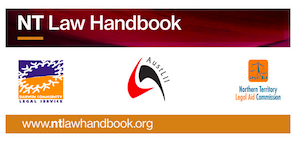-- JonathanMo - 14 Sep 2015
This definition enables a company to register as a trade mark a shape or colour, sound or scent (which the earlier laws did not allow). It also allows the registration of an 'aspect of packaging'. Thus it can allow a company to register as a trade mark something that is purely functional in nature, such as a bottle, allowing a company to generate a quasi-monopoly over a functional item in certain areas of trade activity. Hence Coca-Cola has been able to register the shape of its bottle as a trade mark in Australia under the TMA (which it could not do in the UK under the UK trade mark law). See Coca-Cola Trade Marks [1986] RPC 421. See also Coca-Cola v All-Fect Distributors Ltd [1999] FCA 1721; (1999) 96 FCR 107; 47 IPR 481 (Full Federal Court), in which Coca-Cola protected the shapes of its trade mark bottle against a confectioner producing sweets in the shape of the Coke bottle. See also Kenman Kandy Australia Pty Ltd v Registrar of Trade Marks [2001] FCA 1047; (2001) 52 IPR 137. However, the extensions under the TMA are still subject to the limitations established by the case law as to registrability (see below); in particular that the mark or sign must be used to distinguish goods or services rather than being the goods or services themselves.
What is a trade mark/trade sign?
The TMA defines a trade mark as: a sign used, or intended to be used, to distinguish goods or services dealt with or provided in the course of trade by a person from goods or services so dealt with or provided by any other person. Section 6 of the TMA states:
'Sign' may include the following or any combination of the following - namely, any letter, word, name, signature, numeral, device, brand, heading, label, ticket, aspect of packaging, shape, colour, sound or scent.
This definition enables a company to register as a trade mark a shape or colour, sound or scent (which the earlier laws did not allow). It also allows the registration of an 'aspect of packaging'. Thus it can allow a company to register as a trade mark something that is purely functional in nature, such as a bottle, allowing a company to generate a quasi-monopoly over a functional item in certain areas of trade activity. Hence Coca-Cola has been able to register the shape of its bottle as a trade mark in Australia under the TMA (which it could not do in the UK under the UK trade mark law). See Coca-Cola Trade Marks [1986] RPC 421. See also Coca-Cola v All-Fect Distributors Ltd [1999] FCA 1721; (1999) 96 FCR 107; 47 IPR 481 (Full Federal Court), in which Coca-Cola protected the shapes of its trade mark bottle against a confectioner producing sweets in the shape of the Coke bottle. See also Kenman Kandy Australia Pty Ltd v Registrar of Trade Marks [2001] FCA 1047; (2001) 52 IPR 137. However, the extensions under the TMA are still subject to the limitations established by the case law as to registrability (see below); in particular that the mark or sign must be used to distinguish goods or services rather than being the goods or services themselves.
 Copyright © by the contributing authors. All material on this collaboration platform is the property of the contributing authors.
Copyright © by the contributing authors. All material on this collaboration platform is the property of the contributing authors. Ideas, requests, problems regarding AustLII Communities? Send feedback
This website is using cookies. More info.
That's Fine

